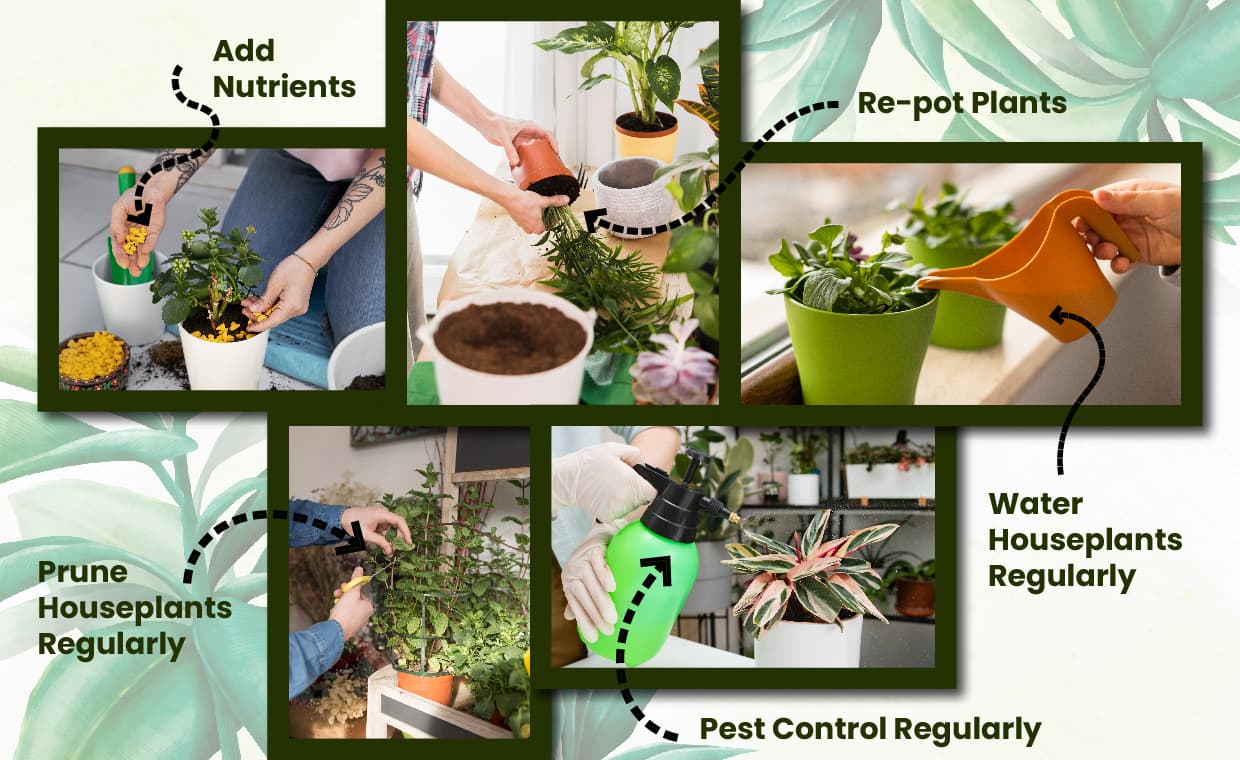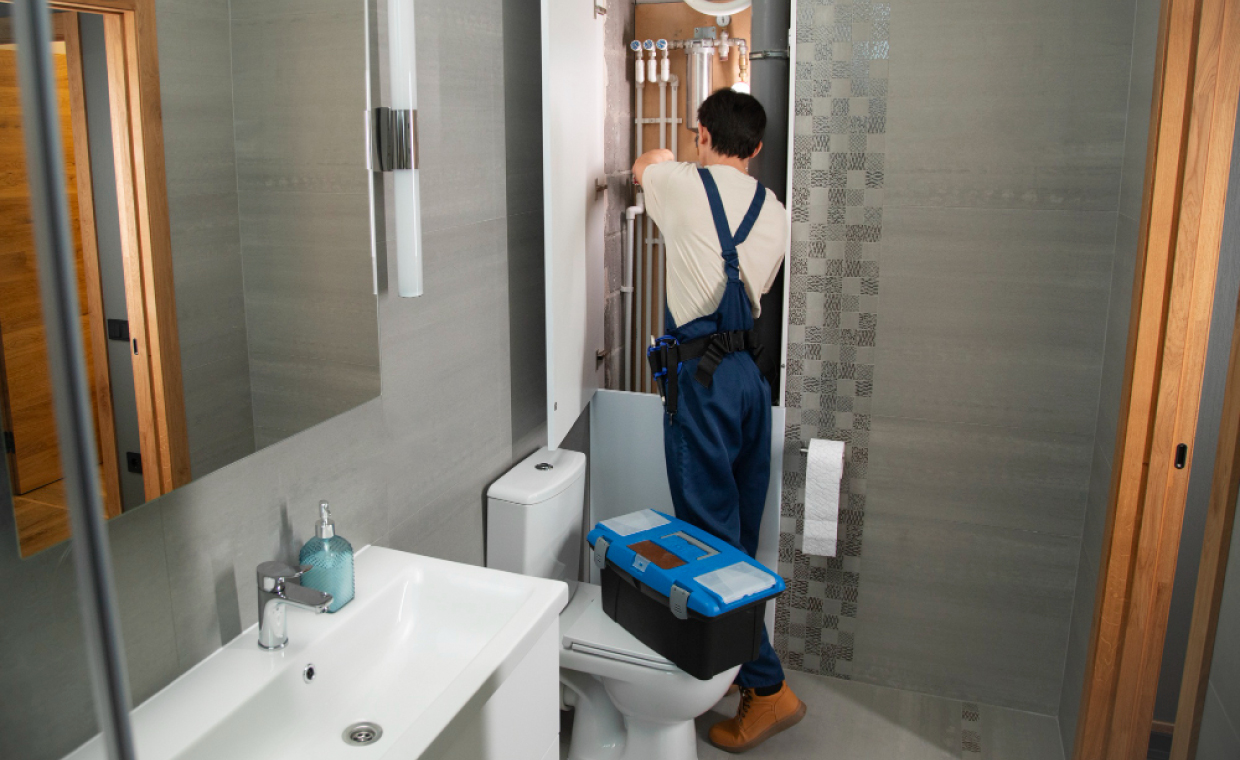
Indoor houseplants are popular because they are low-maintenance, offer health benefits, and can be incorporated into many interior design themes. Indoor plants are an excellent choice for individuals who do not have enough yard space for an outdoor garden or who live in areas with harsh winters. So, if you are new to plantation and not aware of indoor plant care, our definitive guide on indoor houseplant care will equip you with the knowledge you need to help your green buddies grow.
10 Indoor Houseplants Care Tips You Must Know
01. Make Sure You Meet the Light Requirements for Indoor Plants

One of the essential indoor plant care tips is to ensure your plants receive the right amount of light. All plants require light energy for photosynthesis, however, various houseplants require varied quantities of light. Most houseplants, except desert cactus and other succulents, prefer indirect rather than direct light. Houseplants that flourish in bright but indirect light thrive near west-facing windows or a few feet away from south-facing windows.
There are some shady, low-light indoor plants, like the ZZ plant, snake plant, pothos, and philodendron, which may grow in north and east-facing windows. Some houseplants require artificial light to flourish inside, especially during the winter months and in areas with fewer daylight hours.
Normal light bulbs are ineffective for lighting houseplants, resulting in the need to invest in fluorescent or LED lights with full-spectrum bulbs that give a balance of cold and warm light to imitate the natural sun spectrum. Apart from this, if you want to know more about the best spaces for indoor plants, have a look at our blog Indoor Plants At Home – Six Spaces That You Can Utilize And How?
02. Recognize When Your Houseplants Want Watering

In general, over-watering is more dangerous than under-watering; most houseplants like to be slightly dry rather than sopping wet. The idea is to offer enough water to the plants to keep the soil wet but not soggy, as, succulents are an obvious exception; they demand occasional soakings.
Slowly pour water into the potting soil until it trickles out of the drainage holes at the pot’s bottom. Most plants only require watering once or twice a week, and much less in the winter. Stick your finger two inches down into the earth to see if your plant needs watering or not. It is time to water it if it seems dry. One of the most crucial houseplant care tips is to water indoor plants regularly, ensuring they stay healthy and thrive.
03. Use the Appropriate Potting Soil

A good potting soil will aid in the growth of plant roots by providing the optimum combination of nutrients, aeration, and water absorption. Typical potting soil elements include peat moss, shredded pine bark, perlite, and vermiculite. Garden centres provide generic potting soils, but if feasible, pick potting soil that is meant for your houseplant variety. The best soil for indoor plants is a well-draining mix that provides essential nutrients while preventing waterlogging.
Orchids and bromeliads, for example, demand fast-draining soil, but succulents thrive in porous, sandy soils.
Also Read: Gardening Basics: Soil, Seeds, Water and Fertilizers
04. Choose a Pot That is Appropriate for Your Plant

Using the right pot with proper drainage is essential for keeping indoor plants healthy. When selecting a pot, keep the material, size, and drainage capabilities in mind. Use a pot that is appropriate to the size of your plant —not more than a few inches bigger in diameter than the root mass. When the plant outgrows its container, transfer it into a larger pot. If you start a plant in a larger container than necessary, its roots will not collect moisture as it drains through the soil quickly enough. Because plastic pots are light, they are suitable for use in hanging baskets or on wall shelves.
Terracotta pots are heavier; since they are porous, they do not store as much water as plastic pots. Make sure that your pot has a drainage hole at the bottom.
05. Keep an Eye on the Temperature, Humidity, and Ventilation

Maintaining the right temperature and humidity levels are essential houseplant care tips for ensuring your plants flourish. Most houseplants thrive at temperatures ranging from 65 to 75°F (18 to 23°C) during the day and 10°F (-12°C) at night. In general, houseplants demand humidity comparable to their native growth conditions. Because air plants of the genus Tillandsia absorb all their water from the air, it is necessary to mist them frequently with a spray bottle.
Condensation on leaves for an extended period can be hazardous to other houseplants, making optimal ventilation essential for healthy plants. Using a fan to circulate air around your houseplants may aid in the removal of excess moisture and the prevention of dust collection on the leaves.
06. To Add Nutrients, Use Fertiliser

Regularly refill the nutrients in the potting soil to promote long-term, healthy indoor plant growth. When your houseplants are growing or blossoming, nurture them once a month. Plants remain dormant during winters, so it is better to reduce or suspend applying fertilisers to the plants during this period.
Remember that these are only guidelines; certain plants may require a different treatment schedule or a different chemical or organic fertilizer. Before adding any fertiliser, it is good to research which fertiliser is best for indoor plants.
07. Overgrown Houseplants Should be Re-potted

Not sure if your houseplants need replanting? Examine the root systems. If the plant’s roots are circling inside the container, it’s time to repot it. Move the plant to a bigger container if the plant has outgrown its container. If you want to retain it in the same pot, cut part of the roots with a sharp knife and transplant it with fresh potting soil. If the plant has reproduced, remove the small plants while repotting to generate new plants. The optimal seasons for repotting houseplants are spring and summer.
08. Do Regular Indoor Plant Pest Control

Insecticidal soap is a simple and efficient treatment for most soft-bodied pests, including aphids and spider mites. A strong hose spray also helps to reduce the number of these pests. Rubbing alcohol is effective against insects with waxy coats, such as scales and mealy bugs; dab it on with a cotton ball. Be consistent with whatever remedy you choose. For fast-reproducing pests like aphids and spider mites, you may need to treat plants once a week for a month or so to get rid of the bugs.
Also Read: 10 Easy Ways to Control Common Garden Pests!
09. Be Wary of Houseplant Diseases

To prevent the spread of the disease, remove and kill infected houseplants or afflicted leaves or stems as they appear. Because insects carry some infections, controlling the bug population can help prevent these issues.
Powdery mildew that looks like powdery white spots on leaves, fungal leaf spots that may be yellow, brown, or black patches on leaves, and root rot are typical houseplant illnesses to look out for.
10. Houseplants Should Be Pruned and Pinched Back

Pruning indoor plants is one of the most essential indoor houseplant care tips. You may prune at any time of year, but after a summer of growth, October is a natural time to get out your pruning scissors. The primary reasons for trimming houseplants are to improve their appearance and keep them from becoming too huge. Like propagating, cutting overgrown houseplants down to 4 to 6 inches tall helps revive them.
This method is useful for stimulating new growth in trailing plants such as Swedish ivy and pothos that have gone barren at the base.
Pinching is the removal of stem tips using your fingernails or pruners. To induce the formation of side buds, pinch out the tip of a stem and the highest leaves. Plants that develop quickly benefit from repeated pinching to keep them compact and fuller. Regular pruning and adequate watering are key aspects of effective houseplant maintenance.
Final Words
All the care that goes into keeping your houseplants happy might be overwhelming if you are a new plant parent. However, most plants will not require regular care to be healthy. To keep your plants flourishing, remember that consistent indoor houseplant care is essential for maintaining vibrant and healthy plants.
Also Read:
List Of Indoor Plants That Can Boost Positive Energy of Your Home
Step By Step Tutorial to Start Your Herb and Vegetable Garden
Author Bio
Sharmishtha Bhattacharjee – Sharmistha Bhattacharjee is a management professional, but has wide experience in content writing and content management across various niches. Also has been a co-author in various anthologies. Finds passion in writing and expressing thoughts.






























